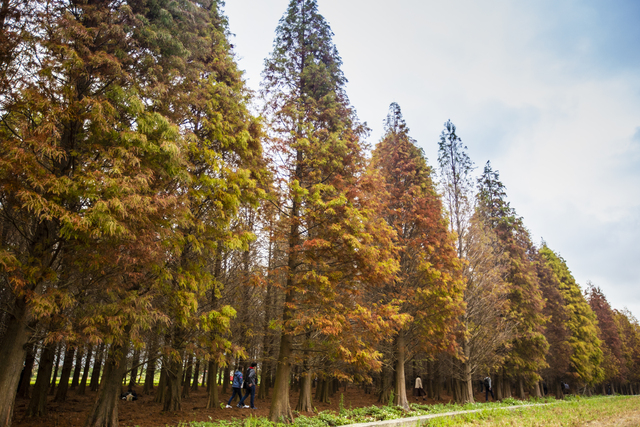Nanxing Cypress Swamp Introduction
The bald cypress has turned red, and travelers' faces are smiling! Every winter, as the cold sets in, along the Fuyuan Street Lane 185 by the Xiaoli Great Pond, nearly three hectares of the Bade Bald Cypress Forest are adorned with magnificent gradient colors. The hues of orange, red, blue sky, white clouds, and the babbling creek always attract thousands of travelers to witness this poetic landscape reminiscent of Impressionist paintings. Bald cypress belongs to the family of conifers and is also known as the American swamp cypress, as it is native to the United States. The trees can grow up to 50 meters tall and are often used as landscaping plants and construction materials. Unlike typical conifers, the bald cypress's needle-like leaves change from green to red as winter approaches and eventually fall like feathers. In Taoyuan, the two major hot spots for bald cypress photography—Daxi Bald Cypress Boulevard (originally named Shiyuan Road) and Nansing Bald Cypress—have seen crowds of viewers surge after going viral on Instagram and Facebook. Daxi Bald Cypress Boulevard features about 300 bald cypress trees lined up in two rows, creating a tranquil beauty. Nansing Bald Cypress, located by the Qidong Creek, is a private nursery with nearly 3,000 bald cypress trees rising majestically, offering a distinct spectacular scene that adds a sense of wonder to the journey, different from the "small yet beautiful" charm of Daxi. Walking along the trail by the Xiaoli Great Pond, the breathtaking scenery of the bald cypress is fully revealed, while the adjacent fields are equally enchanting; in the fallow farmlands, the lovely yellow cosmos sway in the wind, and the red quinoa, often found in mountainous areas, makes a delightful appearance. The expansive Xiaoli Great Pond reflects the distant mountains and nearby forests like a mirror, with occasional cyclists and soaring birds passing by. While enjoying the beautiful views, one can also closely observe characteristics of bald cypress, such as the pneumatophores and light brown cones, providing an interesting lesson in nature.




































